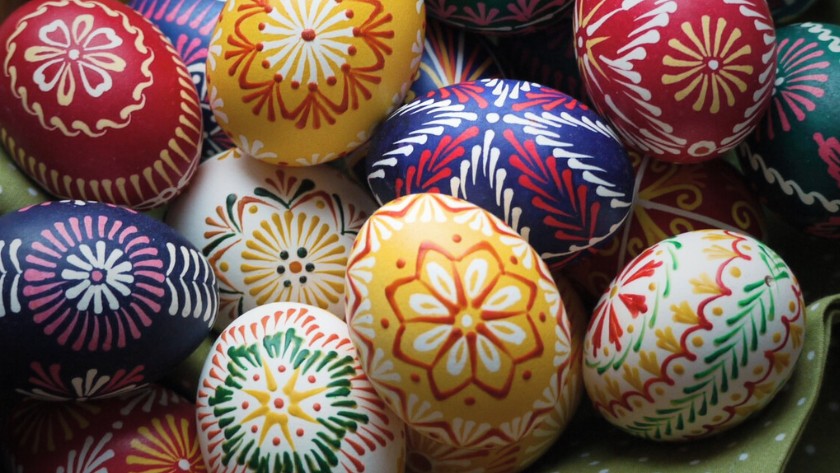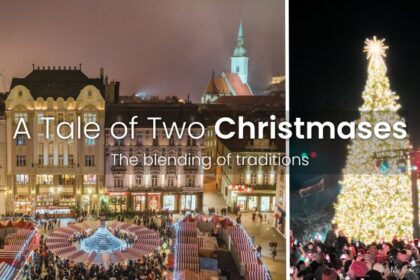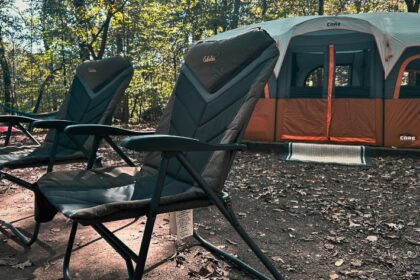Thank you for visiting! This post may contain affiliate links, which means I receive a small commission if you make a purchase using these links (at no extra cost to you). As an Amazon Associate, I earn from qualifying purchases.
Growing up in Slovakia, Easter was nothing like the pastel-colored, egg-hunting celebrations you see here in the States. Sure, the holiday has deep religious roots and is celebrated after 40 days of fasting, but honestly, when I think of Easter back home, one thing immediately comes to mind: water—lots of ice-cold water…I’ll explain in a sec.
So let’s talk more about what my Easters looked like while growing up in Slovakia.
The Days Leading Up to Easter
Our Easter celebrations start with beautiful traditions, like fasting, decorating the house and eggs, baking delicious treats, and preparing traditional foods.
Many Slovaks observe a period of fasting before Easter, typically abstaining from meat and sometimes from other indulgences like chocolate or alcohol.
Decorating your house before Easter is equally important as cooking. There are flowers and bushes associated with our Easter decorations and Easter itself called “zlatý dážd” (golden rain) and “bahniatka” (pussy willow). People collect the branches and put them in vases, then hang their kraslice and other decorations on them. Easter egg – “kraslica” – is an eggshell with two small holes on either side. The egg inside is blown out, and the shell is painted or decorated using various techniques or even lace, depending on the region and the decorator’s talent.
The techniques for decorating the eggs meant for eating differ slightly, and there is a lot of them. This is what my mom always did: she took a raw egg and melted beeswax to draw an ornament on the egg, then boiled it in onion-skin water. As the wax melted off, it left behind a beautiful white design on the colored eggshell.
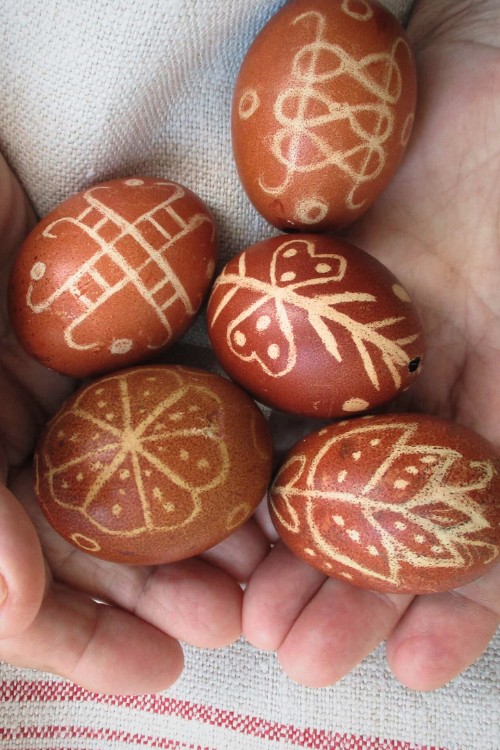
Easter Sunday
On Easter Sunday, families gather around the table after church to enjoy traditional dishes—often after having their food blessed in church during the Blessing of the Easter Baskets. These baskets include a bit of everything: ham, bacon, sausages, decorated hard-boiled eggs, Paska (yeast-raised bread with a brioche-like flavor), salt, butter, and even a popular cake shaped like a lamb. Food from the basket can’t be eaten until it’s blessed (that’s the rule!) and traditionally becomes Easter breakfast for the family.
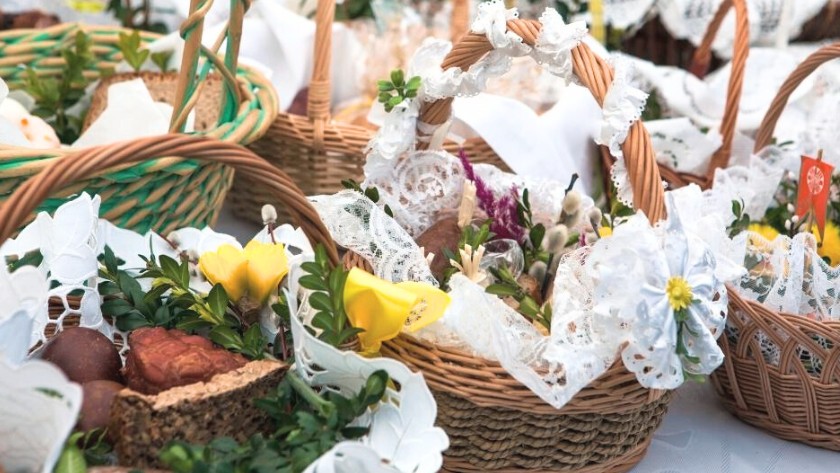
Easter Monday
Growing up in my little Slovak village, Easter Monday was practically a day of survival. Imagine waking up to an icy bucket of water thrown right at you. This isn’t some viral challenge; it’s Slovak Easter Monday. On Easter Monday, tradition called for boys and men to roam the village armed with buckets of water and willow branch whips decorated with ribbons—yes, actual whips, and bottles of cheap perfume. The water-drenching tradition, known as “oblievačka,” and the gentle (or not-so-gentle) whipping, called “šibačka,” was meant to bestow good health, fertility, and beauty upon the girls. But trust me, it mostly just left us soaking wet and freezing.
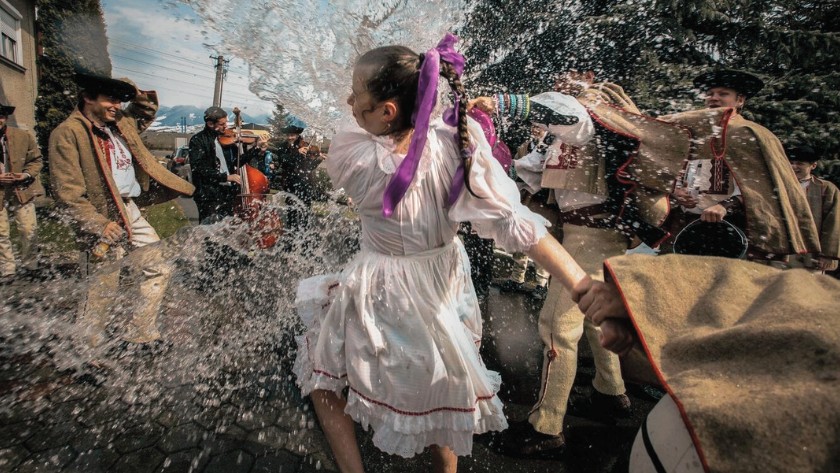
Every year I tried my best to hide. Under the bed, in closets, even pretending I wasn’t home—it never worked. You’d wake up soaking wet and shivering, then hurriedly change your clothes—only to get drenched again by the next group of laughing boys or men. At some point, you’d give up on dry clothes entirely, accepting your soggy fate. Afterwards, in a strange twist, girls and women were expected to reward their tormentors with sweets, food, drinks, or even money. Let’s just say a young Slovak boy could earn quite a fortune on Easter Monday if he splashed enough victims.
Adult visitors got shots of vodka—probably not wise, given they still had more homes to drench. It was not uncommon to see tipsy men on Easter Monday wandering from house to house.
In many regions and larger cities, water buckets have been swapped out in favor of perfume or a cup of water. In some villages, however, it’s still common to spot young men carrying braided whips decorated with colorful ribbons while dressed in traditional folk outfits.
Admittedly, revenge could be sweet on Tuesday when women were allowed to whip and splash the men back. But let’s be honest, wrestling grown men into a bathtub isn’t exactly easy or graceful. It felt more like symbolic justice than actual retaliation.

Now that I live in the U.S., I must admit—I don’t miss the soaked clothing, surprise wakeups, or the endless outfit changes. My Easter Mondays are thankfully dry and involve more chocolate eggs than water buckets. But even with all the chaos, Slovak Easter is unforgettable. It’s a beautiful blend of faith, folklore, and fun (even if you’re the one being dumped in a stream). And while I may not miss being drenched, I’m grateful for the memories—and the traditions that still live on in my heart.
Like this content? Make sure to subscribe to my emails so you always find out what’s happening next!

